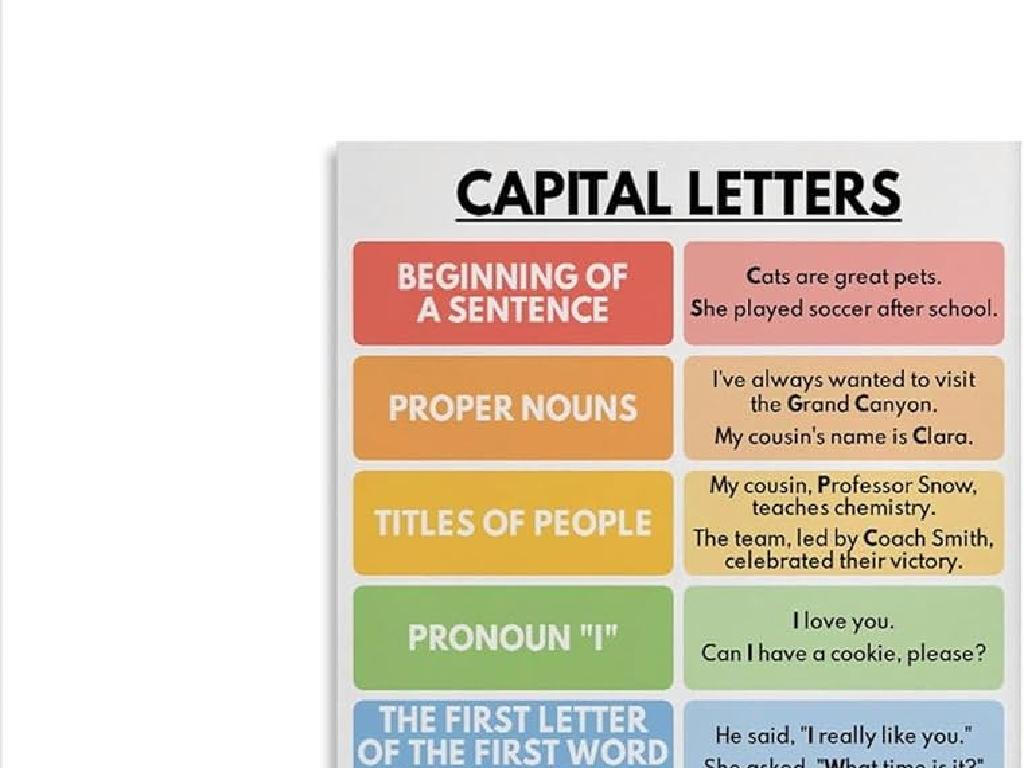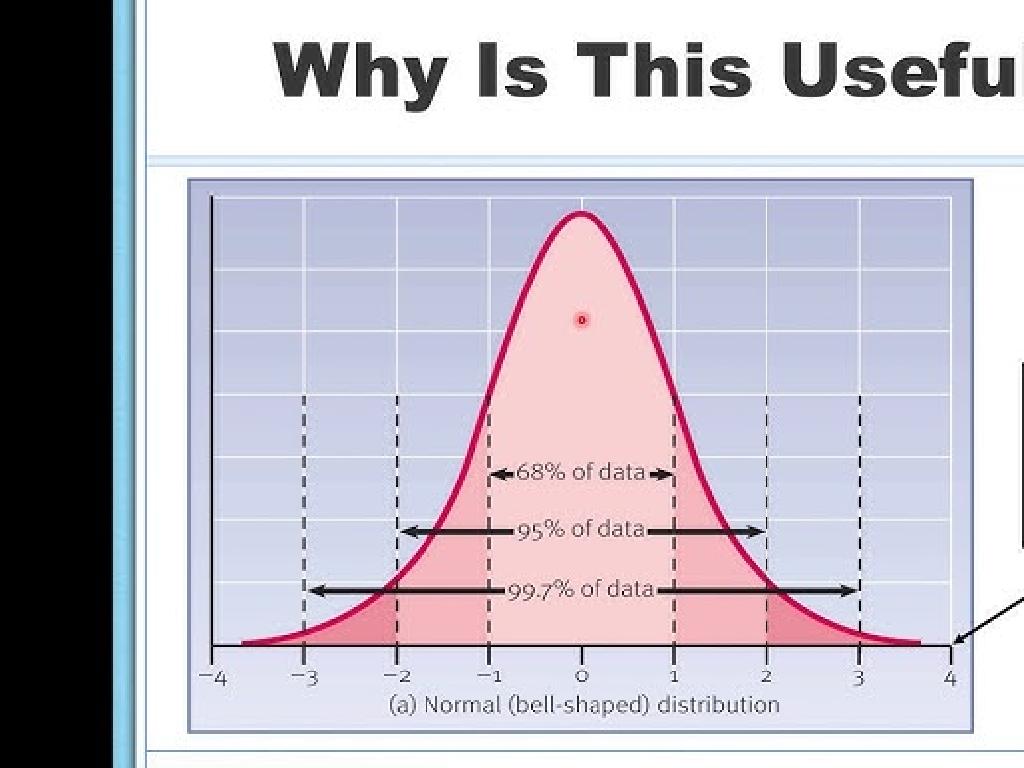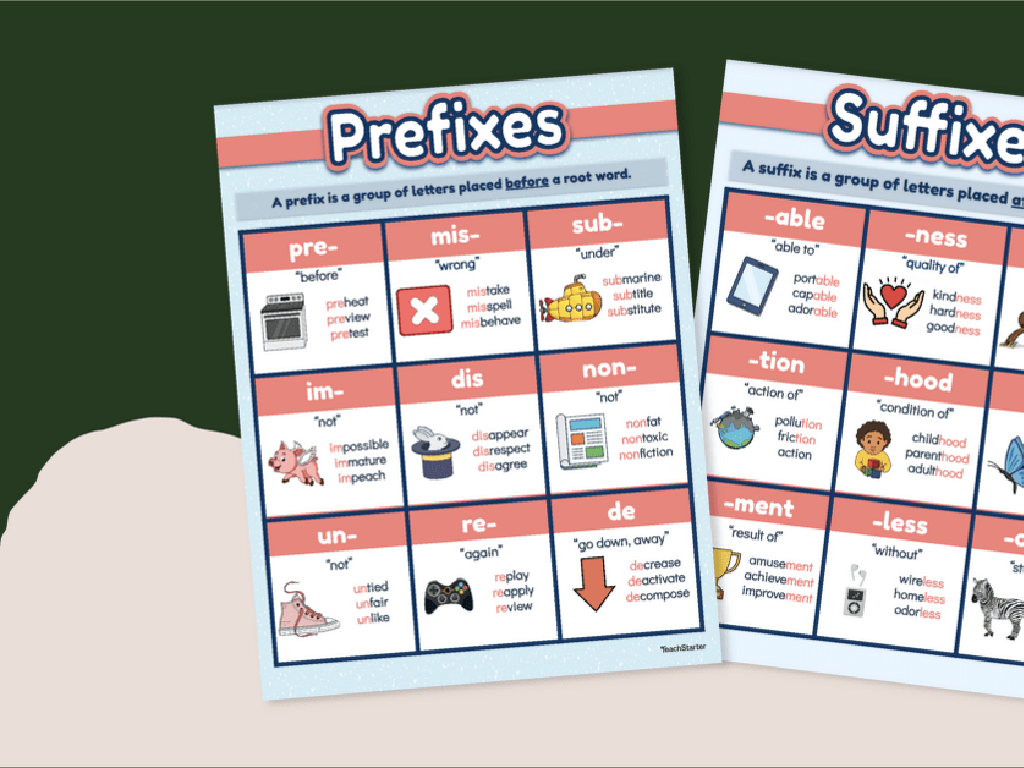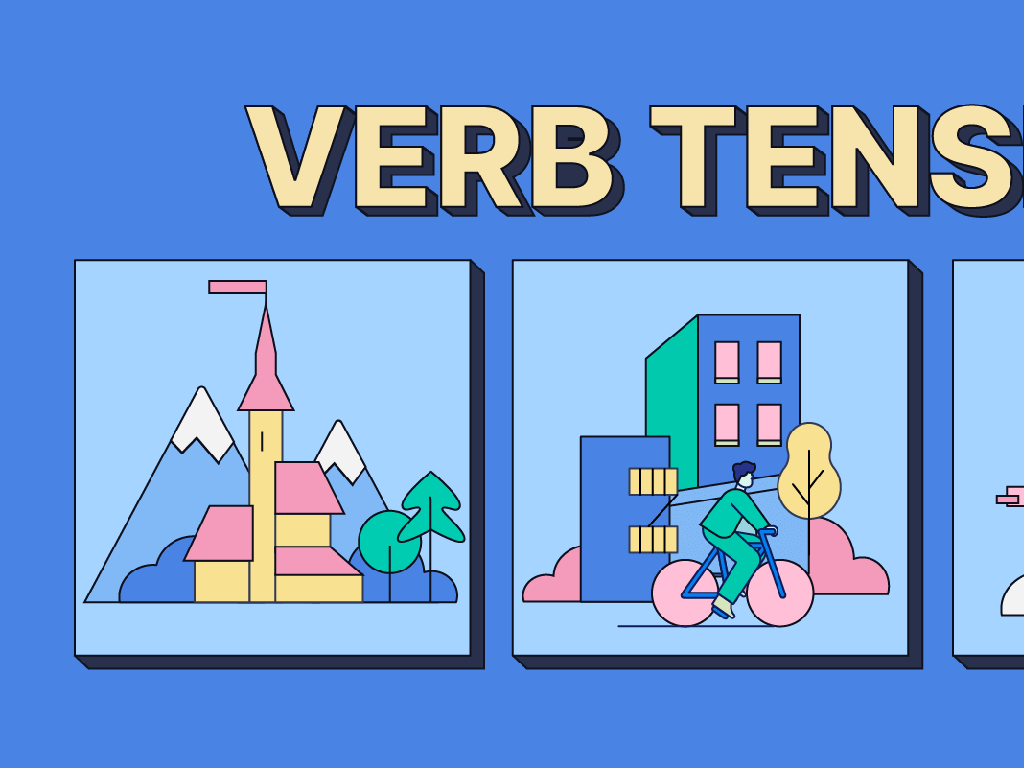Add Two-Digit Numbers Without Regrouping - Sums To 100
Subject: Math
Grade: First grade
Topic: Addition: Two Digits
Please LOG IN to download the presentation. Access is available to registered users only.
View More Content
Welcome to Addition: Big Numbers!
– Learn to add big numbers
– Add without carrying over
– We’ll add 2-digit numbers up to 100, like 34 + 22
– Adding means putting together
– Practice with numbers to 100
– Let’s try 45 + 53, and see we don’t need to regroup
|
This slide introduces first graders to the concept of addition without regrouping with sums up to 100. Emphasize that addition is a way of combining numbers to make a bigger number. Use simple language and examples to demonstrate how to add two-digit numbers. Show that when the digits in the ones place add up to less than ten, we don’t need to carry over to the tens place. Encourage students to think of addition as combining groups of objects, which can help them visualize the process. Provide several examples and use visual aids like number lines or counters if possible. Plan for hands-on activities where students can practice adding with physical objects or through drawing representations of the numbers.
Understanding Two-Digit Numbers
– Two-digit numbers: tens and ones
– Like 35 has 3 tens (30) and 5 ones (5)
– First digit: number of tens
– If the first number is 4, that means 40
– Second digit: number of ones
– If the second number is 7, that means 7
– Adding without regrouping
– Keep tens and ones separate when adding
|
This slide introduces students to the concept of two-digit numbers and their place values, which is crucial for understanding how to add them without regrouping. Emphasize that the tens place represents groups of ten, and the ones place represents individual units. Use visual aids like blocks or drawings to show 10s and 1s. When adding two-digit numbers, students should add the tens to tens and ones to ones without mixing them up. For example, when adding 23 and 35, they add the tens (20 + 30) and then the ones (3 + 5) separately. This method simplifies the addition process and avoids the need for regrouping, making it easier for first graders to grasp.
Adding Without Regrouping
– Start with the ones place
– Add the numbers in the rightmost column first
– If total < 10, no regrouping
– Keep the sum in the same column if it's less than 10
– Write answer under the line
– Place your sum directly below the numbers you added
– Practice with examples
– Try 34 + 25 or 46 + 53 and write your answers
|
This slide introduces first graders to the concept of adding two-digit numbers without regrouping. Emphasize the importance of starting from the ones place, which is the rightmost column in a vertical addition problem. Explain that if the sum of the ones place is less than 10, they can write the answer directly below without carrying over any numbers to the tens place. Provide several examples and encourage students to practice this method. Use simple, clear language and ensure that students understand each step before moving on to the next. During the next class, review their practice examples and address any questions they may have.
Adding Two-Digit Numbers: No Regrouping
– Start with an example: 34 + 22
– Add the ones place first: 4 + 2
– This equals 6
– Next, add the tens place: 30 + 20
– This equals 50
– Combine for the total sum: 56
– Adding 6 and 50 gives us 56
|
This slide introduces students to the concept of adding two-digit numbers without regrouping. The example provided is 34 + 22. Begin by adding the ones place digits (4 + 2) to get 6. Then, add the tens place digits (30 + 20) to get 50. Finally, combine these sums (6 + 50) to find the total, 56. Emphasize that we add the same place values separately and then combine them for the final sum. This method helps students understand the value of each digit in a number. Encourage students to practice with similar problems and ensure they understand that regrouping is not needed when the sum of the ones place is less than 10.
Practice Time: Adding Two-Digit Numbers
– Let’s start adding together!
– Solve problems without regrouping
– Find pairs of numbers that add up to less than 10
– Begin with the ones place
– Add the rightmost digits first
– Add up to sums of 100
– Keep the sum under 100, no carrying over
|
This slide is designed for an interactive practice session. Students will apply their knowledge of addition without regrouping. Encourage them to start with the ones place as it simplifies the process and avoids confusion. Provide several examples on the board or through handouts, such as 34 + 22 or 51 + 48, ensuring that the sums do not exceed 100 and do not require regrouping. Walk through the first few examples with the class, then allow them to try on their own or in pairs. Offer praise and assistance as needed. For homework, assign a few problems for additional practice.
Adding with Objects
– Use objects like blocks for adding
– Group objects into tens and ones
– For example, 10 blocks for ‘tens’ and 5 single blocks for ‘ones’ makes 15
– Visualize what numbers represent
– Seeing the groups helps us understand the value of numbers
– Practice adding without regrouping
– Try adding 23 and 34 using blocks
|
This slide introduces the concept of using physical objects to help first graders understand addition without regrouping. By grouping objects into tens and ones, students can visually comprehend the addition process and what the numbers in a two-digit addition problem represent. Encourage students to use classroom materials like blocks or counters to practice this concept. For example, to add 23 and 34, they would create two groups of ten blocks and three single blocks for 23, and three groups of ten blocks and four single blocks for 34, then combine the groups to find the total without regrouping. This hands-on activity will solidify their understanding of adding two-digit numbers up to 100.
Class Activity: Addition Bingo
– Let’s play Addition Bingo!
– Solve addition problems for Bingo
– Use your addition skills to find answers
– Cover the correct answer on your card
– Each number on your card is a sum to 100
– Aim for five in a row to win!
– Shout ‘Bingo!’ when you get five covered
|
This interactive class activity is designed to help first graders practice adding two-digit numbers without regrouping, with sums up to 100. Prepare Bingo cards in advance, with different possible sums within 100. During the activity, call out addition problems for the students to solve. They must find the sum on their Bingo card and cover it with a marker. The game continues until a student covers five numbers in a row horizontally, vertically, or diagonally and shouts ‘Bingo!’. Possible variations of the game can include playing for a full card or creating patterns. This activity reinforces mental math skills and the concept of addition without regrouping. It also adds an element of fun to learning, which can help students retain the concept better.
Great Work on Addition!
– Excellent adding without regrouping
– Keep practicing at home
– Try more sums every day to get even better
– Adding with regrouping is next
– We’ll explore carrying over numbers soon
– You’re becoming math wizards!
|
This slide is meant to congratulate the students on their hard work and encourage them to continue practicing. Emphasize the importance of practice in mastering math skills. Give them a heads-up that the next lesson will introduce a new concept: regrouping, which is a bit more challenging but an essential skill for addition. Provide encouragement and express confidence in their ability to tackle the next step. For homework, suggest simple addition problems they can work on with their parents or guardians to reinforce today’s lesson.






